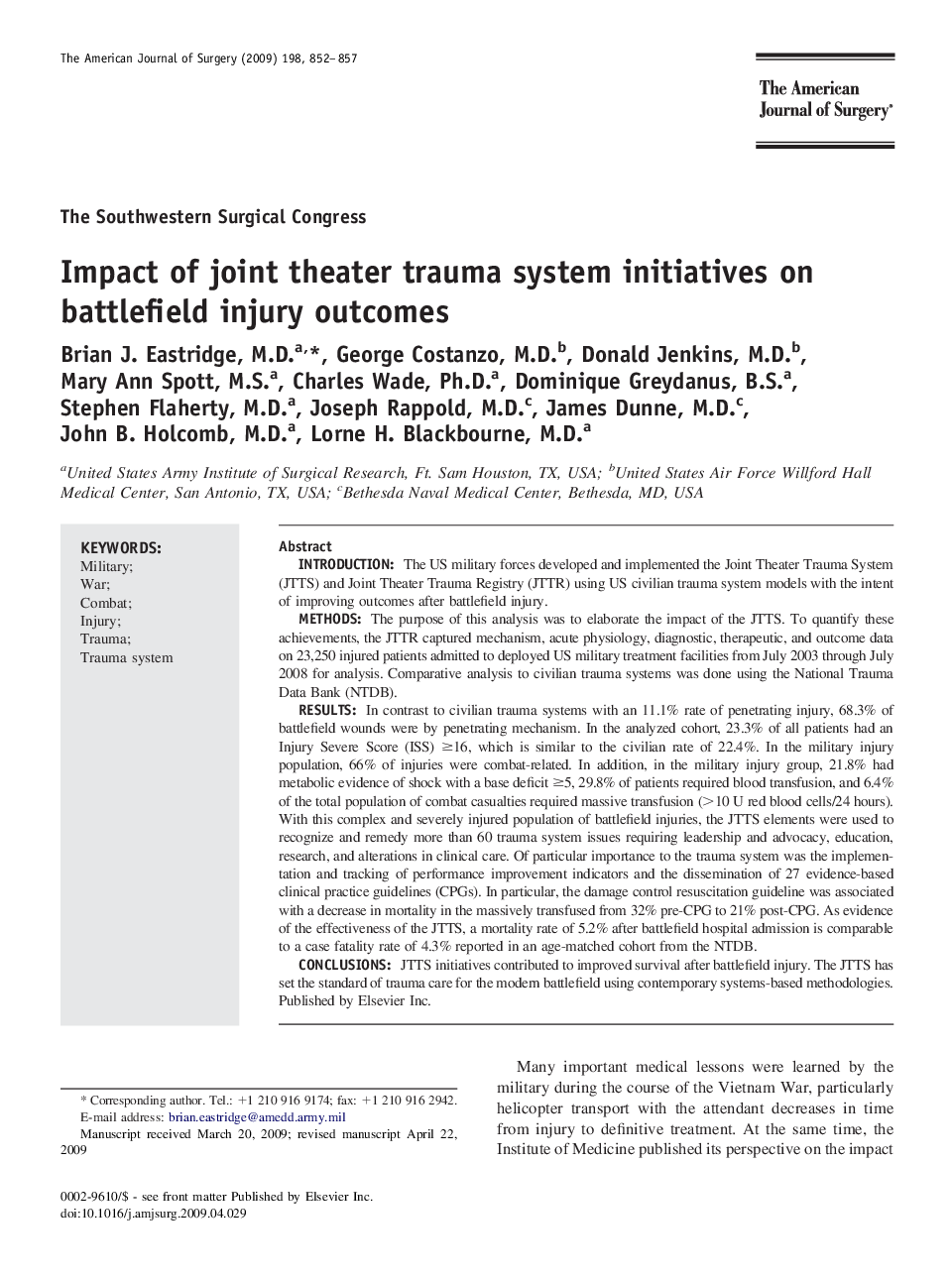| کد مقاله | کد نشریه | سال انتشار | مقاله انگلیسی | نسخه تمام متن |
|---|---|---|---|---|
| 4280524 | 1611561 | 2009 | 6 صفحه PDF | دانلود رایگان |

IntroductionThe US military forces developed and implemented the Joint Theater Trauma System (JTTS) and Joint Theater Trauma Registry (JTTR) using US civilian trauma system models with the intent of improving outcomes after battlefield injury.MethodsThe purpose of this analysis was to elaborate the impact of the JTTS. To quantify these achievements, the JTTR captured mechanism, acute physiology, diagnostic, therapeutic, and outcome data on 23,250 injured patients admitted to deployed US military treatment facilities from July 2003 through July 2008 for analysis. Comparative analysis to civilian trauma systems was done using the National Trauma Data Bank (NTDB).ResultsIn contrast to civilian trauma systems with an 11.1% rate of penetrating injury, 68.3% of battlefield wounds were by penetrating mechanism. In the analyzed cohort, 23.3% of all patients had an Injury Severe Score (ISS) ≥16, which is similar to the civilian rate of 22.4%. In the military injury population, 66% of injuries were combat-related. In addition, in the military injury group, 21.8% had metabolic evidence of shock with a base deficit ≥5, 29.8% of patients required blood transfusion, and 6.4% of the total population of combat casualties required massive transfusion (>10 U red blood cells/24 hours). With this complex and severely injured population of battlefield injuries, the JTTS elements were used to recognize and remedy more than 60 trauma system issues requiring leadership and advocacy, education, research, and alterations in clinical care. Of particular importance to the trauma system was the implementation and tracking of performance improvement indicators and the dissemination of 27 evidence-based clinical practice guidelines (CPGs). In particular, the damage control resuscitation guideline was associated with a decrease in mortality in the massively transfused from 32% pre-CPG to 21% post-CPG. As evidence of the effectiveness of the JTTS, a mortality rate of 5.2% after battlefield hospital admission is comparable to a case fatality rate of 4.3% reported in an age-matched cohort from the NTDB.ConclusionsJTTS initiatives contributed to improved survival after battlefield injury. The JTTS has set the standard of trauma care for the modern battlefield using contemporary systems-based methodologies.
Journal: The American Journal of Surgery - Volume 198, Issue 6, December 2009, Pages 852–857